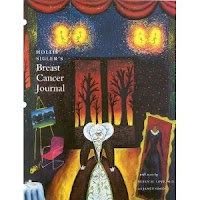UPDATE: DEADLINE EXTENDED TO MIDNIGHT TONIGHT!
As part of my celebration of National Poetry Month, I noted in my post of April 1 that I am giving away two books of poetry. One, Best New Poets: 50 Poems from Emerging Writers, is going to a person whose name will be drawn randomly from all the names left in the comments section for that April 1 post. (Today's the deadline for leaving a comment there.) The other collection, 19 Varieties of Gazelle: Poems of the Middle East, is to be awarded to the first person who posts the correct answers to either the first 10 questions (1-10) or the last 10 questions (11-20) below. All of the questions are based on my poetry-related posts here at Writing Without Paper.
To participate in the challenge, you must leave your answers in the comments section for today's post by 5:00 p.m. EST. I will not select a winner until the deadline passes.
Please number your answers in the same order as the questions appear, check that you've answered all parts of each question, and be sure that your answers correspond to the set of questions you've chosen to answer (1-10 or 11-20). The answers are found easily in the posts I've written on poets and poetry beginning April 1.
I'll announce the winners of both books on May 3. Note: If you do not have a blog, please be sure to include with your responses an e-mail address where I can reach you. No anonymous responses will be considered.
Poetry Book Give-Away Challenge
1. This poet wrote the collection Sakura Park. Who is she?
2. What poet said, "The poet looks at the world as a woman looks at a man"?
3. What is the name of the poet who edited Best New Poets, one of the two books I'm giving away?
4. What are the names of the two poets I selected to highlight in a preview of one of the give-away books?
5. One state Poet Laureate I featured has yet to publish a book of poetry. Who is that poet and what is the state of residence?
6. For which state was Linda Pastan once Poet Laureate?
7. Every state gives its Poet Laureate an annual living and expenses stipend. Is this statement true or false?
8. The position of Poet Laureate or State Poet is usually a life-time appointment. True or false?
9. What is the amount of money attached to the Ruth Lilly Poetry Prize?
10. What is the name of the poetry collection from which I include excerpts in my post on Liz Waldner?
11. Who wrote the collection of poems that I will give to the person correctly answering today's Challenge?
11. Who wrote the collection of poems that I will give to the person correctly answering today's Challenge?
12. Of which state is David Romtvedt Poet Laureate?
13. The state legislatures appoint Poets Laureate. True or false?
14. This poet also is a musician who performs creole dance music. Who is he?
15. What poet wrote the nonfiction book Dawn Light?
16. What is the name of the biologist who writes poetry and what is the name of the collection I wrote about?
17. What are the names of any two of the poets featured in my post "The Poetry of Illness"?
18. Who is singing the words to 19th and 20th Century poems in a video I featured?
19. Who wrote the poem "Bearing Much Fruit"?
20. What husband-and-wife poets did I name in my post on "The Poetry of Illness"?
Have fun! I look forward to announcing both winners.
My regular feature "All Art Friday" will return next week.





















